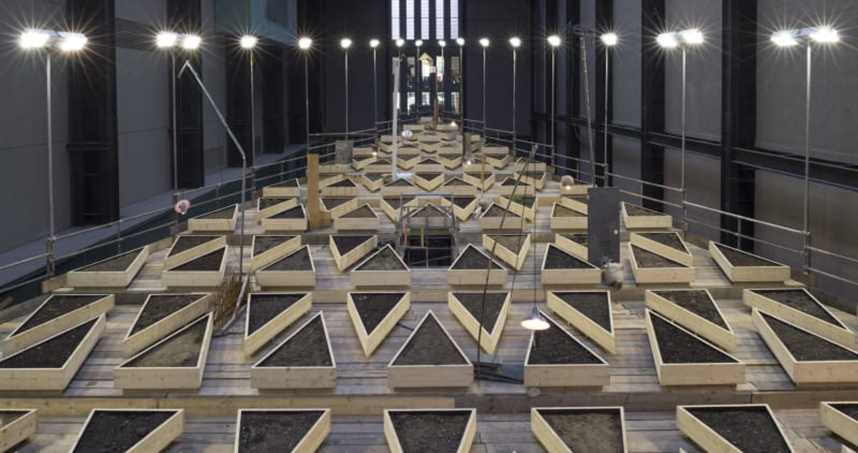Dean’s Seminar Series to Welcome Abraham Cruzvillegas
The seminar will take place at 4 p.m. on Tuesday, October 24
Artist Abraham Cruzvillegas did not plant anything inside the triangular soil beds that filled his Empty Lot exhibition. But, eventually, something grew out of nothing.
Unveiled at the Tate Modern in 2015, the exhibition featured soil imported from 36 green spaces around London. Cruzvillegas simply watered the soil and then waited for the finished product to be shaped by chance. Green vegetation sprouted from the earth and grew into sprawling, brambled bushes.
As demonstrated in Empty Lot, Cruzvillegas creates sculptures and architectural installations by improvising with materials and allowing the finished product to live and grow. As a part of the Northwestern Engineering Dean’s Seminar Series, Cruzvillegas will visit campus this month to discuss Empty Lot and his other works.
Presented in partnership with the Mary and Leigh Block Museum of Art, the seminar, called “Abraham Cruzvillegas: Self-Construction,” will take place at 4 p.m. on Tuesday, October 24 in the Ford Motor Company Engineering Design Center’s ITW Classroom.
Born in Ajusco, Mexico, Cruzvillegas is considered one of the most important conceptual artists to come out of Mexico’s art and architecture scene. Over the past 15 years, he has developed a body of work that investigates what he calls autoconstrucción, or “self construction,” which is inspired by improvised building materials and techniques and informed by the sociopolitical contexts of Latin America.
Cruzvillegas’s works have been shown throughout the Europe, the United States, South America, and Mexico, including at the MoMA in New York, Haus der Kunst in Munich, and Ampara Museum and Colección Jumex in Mexico. He received the 2006 Altadis Contemporary Fine Arts Prize and a 2008 artist research fellowship from the Smithsonian Institution.
